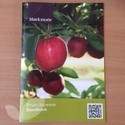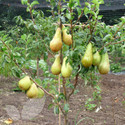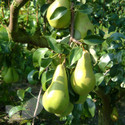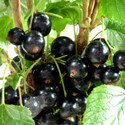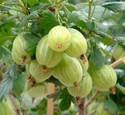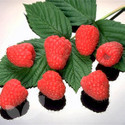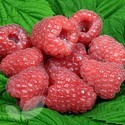So now you have spent quite a fair time deciding what to plant and where to plant everything you now need to get those hands dirty and get on with the actual real physical planting. Whilst the following might all seem an utter pain and far too prescriptive it is essential that you take good care in planting as this will quickly reap rewards and longevity.
Having put the wellies on and gathered your tools it is now essential for you to ensure that your chosen site is cleared of all weeds, roots and any other growth, there is good drainage and that plenty of organic matter is worked into the planting area if the soil is very heavy or very light. Weed clearance needs to be thorough as weeds can compete with trees and plants for nutrients and water and they can retain and spread diseases. Good drainage can be achieved by thoroughly working over the planting area by either double digging or at the very least breaking up the bottom of any planting hole. The best organic matter for working into the planting area is your own well-rotted garden compost but if this is not available it is possible to buy bags of suitable material from garden centres. When planting work into the soil a handful of blood, fish and bone which will act as a slow release fertiliser.
For all top fruit trees (apples, apricots, plums, pears, peaches, quinces, medlars and nectarines) it is essential that the bud or graft union is well above the finished ground level. That’s the elongated lump on the stem near the bottom of your tree where your chosen cultivar has been attached to the rootstock – it’s not usually hard to miss! My advice is to plant your trees so that the union is at least 150 mm (6 inches) above the ground level when planting has finished. As all trees sink a little after planting due to settlement and roots beginning to anchor the union will remain well above finished ground level as the tree starts to grow. You will need to stake all trees to support them during their growing life as the dwarfing rootstocks you will be using will never achieve enough anchorage to prevent damage by wind rock. Always use purpose made ties to ensure a flexible yet strong tie to stakes. May is strongly suggest that you ignore advice which suggests that apples grown on the rootstock MM106 and pears grown on Quince A or C can have stakes removed after a period of time as these rootstocks – although stronger than others – will never achieve sufficient anchorage for occasions of very strong winds.
You will either be able to source your top fruit trees bare rooted (and typically available between December and March) or potted (available at any time of the year). My personal preference is for bare rooted trees as they are cheaper to buy and tend to grow away more quickly but the drawback is that they need to be planted in the winter months when planting conditions are often unpleasant and unsustainable. If you buy bare rooted trees you can heel them into a spare piece of ground if you are not planting for some time but alternatively you can keep them in a cold but frost free place for several days providing the roots are kept damp and covered with plastic bags. If planting bare root trees give them a good soaking for about 30 minutes before planting and trim off any damaged roots.
You may choose to grow top fruit trees in pots or containers which are at least 450 mm (18 inches in diameter) (using MM106 for apples, Quince A or C for pears, St Julien A for plums, peaches and nectarines and Stella for cherries) using a soil based compost comprising well sieved garden soil mixed in equal parts with leafmould and with a handful of blood, fish and bone added. However, if you going to have to use containers for growing fruit I suggest that you first consider the possibility of growing some of the recently available genetically dwarf fruit trees which really are much easier to manage in pots than the “traditional” cultivars which will need attention annually. Incidentally never replant fruit trees on the same site from which similar kinds were removed from as specific plant diseases can build up in the soil and this can cause very poor or minimal growth. For example you should never replant apple trees in exactly the same location as they were growing previously. However, you could contemplate growing stone fruits (apricots, gages, nectarines, plums and peaches) in areas where apples grew previously and vice versa of course although I would still introduce different soil into the planting holes. Not forgetting those soft fruit bushes, it is essential to plant them firmly into well prepared holes but at a slightly lower level than they were grown in the nursery. For red and whitecurrants and gooseberries prune after planting to a good bud on a single stem to about 225mm (9 inches) above ground level. You can either grow these plants as simple bushes or – as I prefer – as cordons, double or triple cordons. Growing as cordons will provide you with more fruiting wood and will enable you to pick much more easily and far less painfully in the case of gooseberries! They also look far more attractive grown in this way. If you are growing as cordons you will need to train them up canes or a suitable framework. Blackcurrants are grown as multistemmed bushes and after planting prune the stems to about 225mm (9 inches) as with red and whitecurrants. Similar to top fruit you will be able to buy soft fruit bushes bare rooted or potted although for these plants I firmly believe that bare root planting will ensure that they grow away strongly at an early stage.
Raspberry plants will come as bare rooted plants and although planting procedures as for other soft fruit apply pruning after planting is slightly different. For each raspberry plant you are likely to have between three and five canes. Prune out weak and dead canes leaving no more than two canes and prune these down to a bud at around 225mm (9 inches) from the ground. Supporting framework will depend on the type of raspberry. If the cultivar is autumn fruiting a simple structure of supporting wires can be utilised as the canes are generally cut down at the end of every season. But if the cultivar is a summer fruiting type a more substantial supporting framework will be required. Several good fruit growing books are available which illustrate this.
Finally, strawberries let’s talk strawberries. Just forget about growing them in the ground and simply grow them in grow bags on an annual basis or in pots or even hanging baskets. This is how the commercial growers work and is the most logical approach in the allotment or garden.
